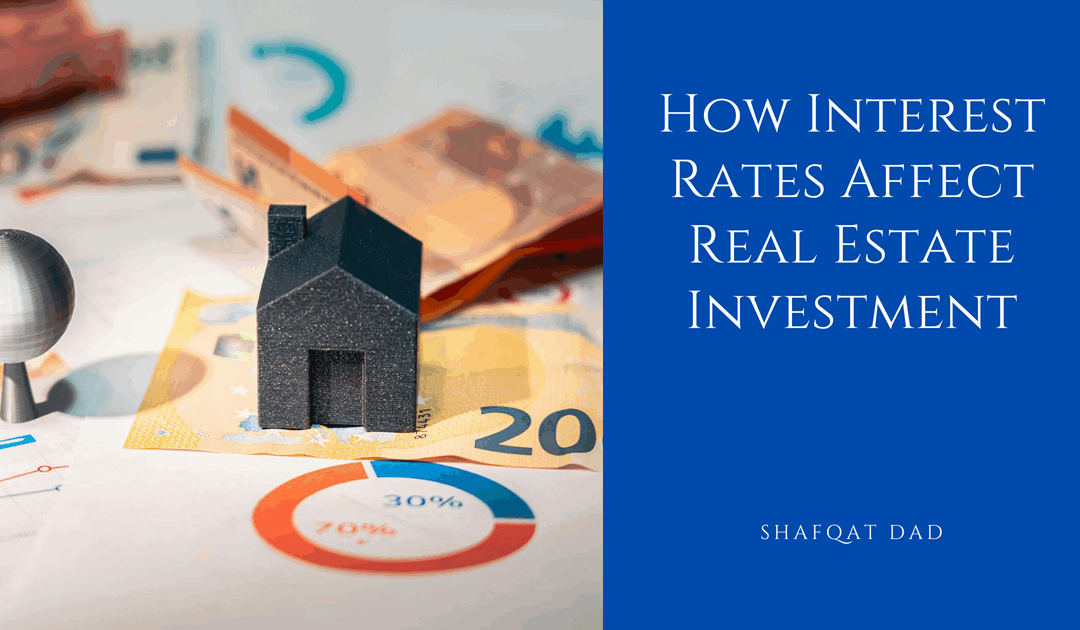Interest rates are one of the most influential factors in real estate investment. They affect not only the cost of borrowing but also the overall demand for property, market trends, and investor behavior. Understanding how interest rates influence the real estate landscape is essential for anyone involved in buying, selling, or investing in property.
At the most basic level, interest rates determine how much it costs to borrow money. When interest rates are low, borrowing is more affordable, encouraging individuals and businesses to take out loans for property purchases. Lower rates reduce monthly mortgage payments, making homeownership more accessible to a larger portion of the population. For investors, lower rates mean better cash flow and higher potential returns, making real estate a more attractive option.
Conversely, when interest rates rise, the cost of borrowing increases. Higher mortgage rates translate into larger monthly payments, which can limit the purchasing power of buyers. This often leads to a slowdown in demand, as fewer people can afford to buy homes or invest in properties. Real estate investors may become more cautious, delaying purchases or seeking properties with higher returns to offset increased financing costs.
The relationship between interest rates and property values is complex. In general, low interest rates can drive up home prices due to increased demand. With more buyers entering the market, competition intensifies, and sellers can command higher prices. However, when rates rise, demand tends to decrease, which can lead to price stabilization or even declines, especially in overheated markets.
Commercial real estate is particularly sensitive to interest rate fluctuations. Higher rates can affect the capitalization rate, or cap rate, which is used to value income-producing properties. As interest rates rise, investors may demand higher cap rates to compensate for the increased cost of capital. This can lead to a decline in property values, especially if rental income does not increase accordingly.
Interest rates also impact construction and development. Higher borrowing costs can slow new construction, as developers may struggle to secure financing or justify the higher cost of capital. This can lead to a supply shortage over time, particularly in high-growth areas. On the other hand, lower rates can stimulate construction activity, encouraging developers to take on new projects and expand supply.
In addition to mortgage costs, interest rates affect broader economic conditions that influence real estate. Rising rates often signal tightening monetary policy aimed at controlling inflation. While this may stabilize the economy, it can also lead to slower growth and reduced consumer spending. A weaker economy may reduce demand for both residential and commercial properties.
Investor sentiment is also closely tied to interest rates. When rates are low, real estate becomes more attractive compared to other investment vehicles like bonds or savings accounts, which may offer lower returns. This can lead to increased capital flowing into real estate markets. However, when interest rates rise, fixed-income investments become more appealing, potentially pulling investment away from real estate and cooling market activity.
Interest rates can also influence rental markets. When borrowing becomes more expensive and homeownership declines, more people may choose to rent rather than buy. This can drive up rental demand and prices, benefiting landlords and multifamily investors. On the other hand, rising rates that impact overall affordability may also suppress rental increases, especially if tenants are stretched financially.
For real estate investors, navigating interest rate changes requires careful strategy. Locking in fixed-rate mortgages during periods of low rates can provide long-term stability and protection against future increases. Conversely, during times of rising rates, it’s essential to reassess the financial viability of potential investments, stress-test assumptions, and consider shorter-term holds or value-add opportunities that can yield quicker returns.
Monitoring interest rate trends, economic indicators, and central bank policies is key to making informed investment decisions. Federal Reserve announcements, inflation reports, and employment data all provide insight into where rates may be heading. Investors who stay ahead of these changes are better positioned to adapt their portfolios and mitigate risk.
In summary, interest rates are a powerful force in the real estate market, influencing everything from property values and demand to investment strategy and market cycles. While they are beyond the control of individual investors, understanding their impact allows for smarter decision-making and long-term success in real estate investment.

